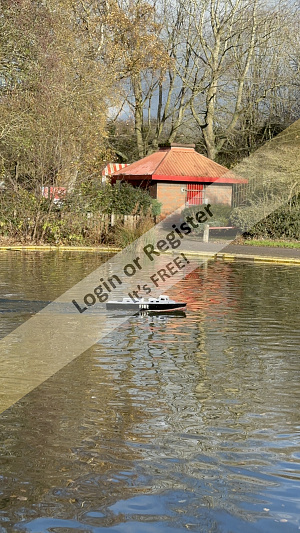|||
|
|
🗝 Login
🤖 Create Account
Main Menu
🚤 Model Boats
• Forum
• Build Blogs
• Media Gallery
• Boat Clubs & Lakes
• Events
• Boat Harbour
• How-To Articles
• Plans & Docs
• Useful Links
• The Games Chest
This Website
🔍 Search
📝 Guestbook
👨👩👧👦 Members (1,794)
📖 Quick Site Guide
📣 Support
👥 Membership
Hobby Supplies
🛍️ Online Shop
Not Registered
Go AD FREE & get your membership medal
BRONZE
Less Ads
SILVER
GOLD
Ad Free
Cancel
Anytime
Anytime
£2.50
£4.50
£6.50
Subscribe
Go AD FREE & get your membership medal
BRONZE
Less Ads
SILVER
GOLD
Ad Free
For A Whole Year!
£25
£45
£65
Donate
You Will Be Helping Towards:
Domain Fees
Security Certificates
iOS & Android App Fees
Website Hosting
Fast Servers
Data Backups
Upkeep & Maintenance
Administration Costs
Without your support the website wouldn't be what it is today.
Please consider donating towards these fees to help keep us afloat.
Read more
All donations are securely managed through PayPal.
Many thanks for your kind support
Without your support the website wouldn't be what it is today.
Please consider donating towards these fees to help keep us afloat.
Read more
All donations are securely managed through PayPal.
Many thanks for your kind support
Model Boats Website
Home
Forum
Build Blogs
Media Gallery
Boat Clubs & Lakes
Events
Boat Harbour
How-To Articles
Plans & Docs
Useful Links
The Games Chest
Welcome to the Model Boats Website! A place for all model boaters!
Feel free to browse through the website, ask your questions, upload your photos or even start your own blog!
Feel free to browse through the website, ask your questions, upload your photos or even start your own blog!
Login To
Remove Ads
Remove Ads
Trending Now
Forum
8 Channel Transmitter
Lew Z
You have a nice selection of transmitters! I still use my Futaba F14 andF16 on 40hz and built with every model a receiver in my boat.
🇧🇪 hermank

15 minutes ago
Forum
Trotamares ex-fishing boat
I think your searches should be directed to the Mantua Model website and not the Artesania Latina website if you want to find the Trotamares model.
If I'm not mistaken, Mantua generally sells kits for beginners and only designs for more experienced craftsmen. This should be the case with Trotamares as well.
🇮🇹 AlessandroSPQR

1 hour ago
Forum
My Christmas present
We enjoyed our Christmas day with our family. Weather was clear with a temperature of about 75F. It's been like this for a week or two including today. Should be running boats every day but you know the rest of the story. (No snow for 34 years)
Lew
🇺🇸 LewZ

3 hours ago
Blog
Re: Krick Paula | Work / Crane Boat
72cm=28-3/8" for our America-anchored friends.
How much will it weigh with battery installed ??
A respectable L.O.A., easily transportable
🇨🇦 RodC

3 hours ago
Blog
Alum solder
Thank you HS. I was not aware of that. It would certainly simplify construction.
🇺🇸 Chum444

15 hours ago
Forum
Merry Christmas and Happy New Year Friends
Love It!
🇨🇦 Ronald

16 hours ago
Blog
Re: Vosper
Jumpugly asked for ballast information? I had to come over to my computer to look up building folders. Here are some details for you.
You can see the yellow Velcro strip just above the prop shaft. This strap holds the battery; you can see more of it inside the companion way in photo two.
It is using a small, 7.2v NiMH 1200mah battery
I added coaming to parts of this model, not knowing if water would spray up on the deck when underway. Now after building it and running it in various ponds, the hull design disperses the water very well. If I were to build it again, I probably would alter the height of the coaming.
🇨🇦 Ronald

18 hours ago
Blog
KNOCKER WHITE LEADING UP TO CHRISTMAS DAY 'OFFICIAL' MAIDEN VOYAGE
Further progress...
33) 03-08 Dec, hull painted matt black upper, brick red lower, white bulwark tops.
Actually, there were a few 'test' voyages for the hull prior to the xmas day sailing... . After sealing/painting the hull, I thought I would try out how she floated just with the running gear. I was initially worried that the forward position of the 5-cell AA drive pack would cause her to be nose heavy, but was pleasantly surprised to find she sat quite evenly in the water.
There was about an extra centimetre of freeboard below the intended waterline, so clearly lead ballast was required, yet I couldn't resist having a dabble with the throttle in this state; my neat looking little tugboat surged forward and rose up on the plane when the throttle was fully opened - quite hilarious to see her half out of the water, as agile as a small runabout! (It has inspired me to look into a simple runabout build for the pond in the future...). Anyways, enough of that!
34)13Dec - After drying her off I traced the hull planform onto squared paper and calculated she required about 300grams of ballast, 210 of which was added with roofing lead scraps.
35)22Dec - The remaining weight was to be provided with a 2-cell AA battery pack intended for LED lights, which proved to be a bit of a squeeze into the rear compartment; I had experimented with cutting down some cheap xmas LEDs to light up the inside of the superstructure, but also intended to use red/green LEDs for the navigation lights and white LEDs for head/tail lights - I thought these might add interest to future twilight backyard pond sailing sessions.
36/37/38 23Dec - After further hull tests, I found that while the hull was lower in the water, the double AA pack actually sank the rear a little too much, as well as being difficult to stuff into the rear compartment. As a result of this, I opted to buy some cheap(ish) AAA rechargeables, as these were both lighter and more compact for fitting. A further hull test proved this combination was just about right, and the video clip included in this episode shows a very satisfactory performance.
39 & 40)While all the hull testing was going on, the superstructure rear engine compartment housing was added, the tiller cover was made up from card, and the funnel from a plastic pill bottle was sourced. These were all subsequently sealed and painted with enamels following suggested colours from Glynn Guest's book. The inside of the superstructure was given a coat of gloss white enamel to reflect the LED light from inside once lit up.
41) The video clip of the official 'maiden voyage' on Xmas morning, taken by my wife on our recently completed back yard pond.
Although having achieved the aim of sailing by xmas day, I will post again once I have completed further details such as final superstructure painting/glazing/fittings/LEDs etc. These often take longer than the basic build...
Merry Christmas to you all and all the best for 2026,
Nick
🇳🇿 Nick Ward

1 day ago
Forum
Holiday greetings from the seaside
Merry Christmas to all ship modelers, especially Colin and his family.
🇮🇹 AlessandroSPQR

1 day ago
Forum
Next project
Merry Christmas Gang!!!!! Enjoy and let's build our boats like never before in 2026!!!
🇺🇸 jumpugly

2 days ago
Forum
Question of the Day?
Same here sailed dinghys a bit an more big ones, but never heard of the phrase, so chose the longest answer.
Roy
🇬🇧 roycv

2 days ago
Blog
Re: Classic Model Power Boats
Hi Madwelshman,
I would say that seing that the Veron Thames Police Launch was an old boat originaly then YES definitly it to me would be clased as a Classic Model Power Boat.
They plane very well when they are set up correctly, and they were used to chase if needed to on the Thames.
Wonderful little Model Classic Power Boat.
🇬🇧 BOATSHED

2 days ago
Blog
Re: Finishing the Deck
Yes, that's the way with model boat building, sometimes you can spend a lot of time and not look as though you have made much progress and other times, as with building the superstructure it can come on in leaps and bounds.
🇬🇧 ChrisF

3 days ago
Forum
Movie rust and aging...
Someone really knows how to weather a model boat. Excellent!
🇺🇸 Hsailer

3 days ago
Forum
Mary Ann 472
I’ve added coaming around the hatch ways and created a center battery support in the hull. A 7.2v NiMH will just fit through the hatch and sit on a shelf inside the hull.
I was showing PeterD an ESC that I bought on Amazon and he liked that it had various options which included being able to set it to perform without a pause between forward and reverse, a common problem with rc crawler esc.
I liked that it had Dean’s connectors on it as all my batteries are setup with this connection.
🇨🇦 Ronald

3 days ago
Blog
Fairey Fisherman 27 - Hull
Some progress has been made when time permitted. A keel box was formed and taken up well above the waterline, the top has been left open so water can dry off. For the mast support I'm using a length of square section beech and a base was made for that and then glued to the hull keel.
Supports were then made for the top drop keel support and then glued to the frames - the top support was then bolted to them. Once the mast support is in place it will be restrained by the top support - this means that the mast and drop keel forces will be nicely tied together.
The cabin sides were then cut out and dry fitted. They won't be glued in place until I've finished the outside of the hull as it needs to be turned upside down again which I moved onto next. Lightweight cloth was applied followed by four coats of Eze-Kote resin in preparation for painting and protection whilst I'm working on the superstructure. Before I do that I need to make and fix the bilge keels which will be sometime after Christmas.
Chris
🇬🇧 ChrisF

4 days ago
|
New Promotion
Master Seaman
 Heners2332
Heners233213 hours ago
Birthday This Week
Turns 71
 Cpt-Pugwash
Cpt-Pugwash14 hours ago
New Member
Sweden
 hkanS
hkanS16 hours ago
New Member
United Kingdom
 RICKH
RICKH21 hours ago
New Member
Switzerland
 IvanB1
IvanB123 hours ago
New Promotion
Chief Petty Officer 2nd Class
 Nick Ward
Nick Ward1 day ago
Birthday This Week
Turns 71
 Mirangi
Mirangi1 day ago
New Member
United States
 TimothyP1
TimothyP11 day ago
New Member
Canada
 DarrelB
DarrelB2 days ago
New Member
Australia
 LaurenceC1
LaurenceC12 days ago
New Promotion
Chief Petty Officer 2nd Class
 peterbro
peterbro3 days ago
New Member
United States
 KevinB2
KevinB24 days ago
New Member
France
 BOB27600
BOB276004 days ago
New Member
Canada
 Toad Guy
Toad Guy4 days ago
Birthday This Week
Turns 66
 Ace23
Ace235 days ago
New Member
Belgium
 MichelD
MichelD6 days ago
New Member
France
 LaurentL1
LaurentL17 days ago
New Promotion
Able Seaman
 PEI
PEI7 days ago
New Member
United Kingdom
 GeorgeD
GeorgeD7 days ago
New Member
United Kingdom
 DavidF4
DavidF48 days ago
New Member
Portugal
 FranciscoC
FranciscoC8 days ago
New Member
Netherlands
 Andreas
Andreas9 days ago
New Member
United Kingdom
 PA312
PA3129 days ago
Birthday This Week
Turns 67
 oddjob58
oddjob589 days ago
New Promotion
Able Seaman
 Hsailer
Hsailer9 days ago
Birthday This Week
Turns 84
 TonyAsh
TonyAsh9 days ago
Birthday This Week
Turns 74
 DWBrinkman
DWBrinkman9 days ago
Account Updated
Updated 'About Me'
 Kenothomo
Kenothomo10 days ago
Birthday This Week
Turns 59
 neilw
neilw10 days ago
New Member
United Kingdom
 GrahamF
GrahamF11 days ago
New Member
United Kingdom
 chrisB3
chrisB311 days ago
New Member
United Kingdom
 NickK
NickK11 days ago
Birthday This Week
Turns 81
 chiffs
chiffs11 days ago
Account Updated
Changed Avatar
 Heners2332
Heners233211 days ago
New Member
United Kingdom
 EsterP
EsterP13 days ago
New Member
United Kingdom
 IanR1
IanR113 days ago
New Member
United Kingdom
 Heners2332
Heners233213 days ago
New Member
Germany
 WalterB
WalterB14 days ago
New Member
Canada
 WallaceG
WallaceG14 days ago
New Member
United Kingdom
 PeterG5
PeterG514 days ago
New Member
Bermuda
 JonandSusanT
JonandSusanT14 days ago
New Member
United Kingdom
 MR H 17
MR H 1714 days ago
New Member
United Kingdom
 davef
davef15 days ago
Birthday This Week
Turns 65
 Hook
Hook16 days ago
Birthday This Week
Turns 68
 MouldBuilder
MouldBuilder16 days ago
New Member
United Kingdom
 ShaunS
ShaunS16 days ago
Birthday This Week
Turns 74
 JEANFRANCOIS G
JEANFRANCOIS G17 days ago
New Member
Bermuda
 ArnoldP
ArnoldP18 days ago
See More
Forum Topics
8 Channel Transmitter
Lew Z
You have a nice selection of transmitters! I still use my Futaba F14 andF16 on 40hz and built with every model a receiver in my boat.
15 minutes ago by 🇧🇪 hermank ( Rear Admiral)
Rear Admiral)
 Rear Admiral)
Rear Admiral)
RC & Electrics
12 Posts
16 Likes
16 Likes
Started
22 hours ago
by Heners2332
22 hours ago
by Heners2332
Latest
15 minutes ago
by hermank
15 minutes ago
by hermank
Trotamares ex-fishing boat
I think your searches should be directed to the Mantua Model website and not the Artesania Latina website if you want to find the Trotamares model.
If I'm not mistaken, Mantua generally sells kits for beginners and only designs for more experienced craftsmen. This should be the case with Trotamares as well.
1 hour ago by 🇮🇹 AlessandroSPQR ( Fleet Admiral)
Fleet Admiral)
 Fleet Admiral)
Fleet Admiral)
Building Related
4 Posts
5 Likes
5 Likes
Started
20 hours ago
by roycv
20 hours ago
by roycv
Latest
1 hour ago
by AlessandroSPQR
1 hour ago
by AlessandroSPQR
My Christmas present
We enjoyed our Christmas day with our family. Weather was clear with a temperature of about 75F. It's been like this for a week or two including today. Should be running boats every day but you know the rest of the story. (No snow for 34 years)
Lew
3 hours ago by 🇺🇸 LewZ ( Vice Admiral)
Vice Admiral)
 Vice Admiral)
Vice Admiral)
Hobby Chit Chat
12 Posts
57 Likes
57 Likes
Started
2 days ago
by EdW
2 days ago
by EdW
Latest
3 hours ago
by LewZ
3 hours ago
by LewZ
Merry Christmas and Happy New Year Friends
Love It!🥰
16 hours ago by 🇨🇦 Ronald ( Fleet Admiral)
Fleet Admiral)
 Fleet Admiral)
Fleet Admiral)
General Resources
5 Posts
36 Likes
36 Likes
Started
2 days ago
by Ronald
2 days ago
by Ronald
Latest
16 hours ago
by Ronald
16 hours ago
by Ronald
Holiday greetings from the seaside
Merry Christmas to all ship modelers, especially Colin and his family.
1 day ago by 🇮🇹 AlessandroSPQR ( Fleet Admiral)
Fleet Admiral)
 Fleet Admiral)
Fleet Admiral)
Non-Hobby Chat
18 Posts
235 Likes
235 Likes
Started
9 days ago
by Chum444
9 days ago
by Chum444
Latest
1 day ago
by AlessandroSPQR
1 day ago
by AlessandroSPQR
|
|
Login To
Remove Ads
Remove Ads
Build Blogs
1 Post
1 Follower
2 Likes
Krick Paula | Work / Crane Boat
Kit Build bought from Krick. Formerly a Robbe Kit but now known as Romarin by Krick.
72cm length with a 600 motor ( eventually!)
🇬🇧 Heners2332

13 hours ago

4 Posts
5 Followers
25 Likes
Next project: 36 ft Northern Bay sport fisherman
The Northern Bay lobster and sport fishing boats are built in Qgunquit, Maine. Known as Down East boats they are semi-displacement hulls. They are very good sea boats stable in heavy seas. Compared to semi-vee hulls common to many other sport fisherman boats in the U.S. the Down East hulls tend to be wet boats. As with everything else, boat design is always a compromise.
1&2 The inspiration
3&4 Beginning steps
🇺🇸 Chum444

15 hours ago





1 Post
3 Followers
10 Likes
Vosper
Well, I was right, the Jolly Red Guy did give me a model boat for Christmas. Got something to do on a cold winter day—a plastic Vosper MTB77. The hull is a single piece, and I will need to add the motors and rudders for R/C capability. Any suggestions will be helpful.
🇨🇦 GARTH

1 day ago

4 Posts
2 Followers
32 Likes
GLYNN GUEST KNOCKER WHITE TUG
I mentioned in the Vic Smeed Vivacity forum I would do a few smaller builds while chugging through the Vivacity project; the first of these I have started (while waiting on certain components/materials for Vivacity), based on Glynn Guest's Knocker White tugboat plan from his book 'Small Radio Control Boats'.
The Driving force behind choosing this particular design was the fact I had just filled my Backyard Model Boating Pond for the first time and sailed a couple of small free-running boats in it.
I had already made Arcady and Bredette many years ago when they were first issued as free plans in Model Boats, so Knocker White was the next project from the book with the necessary compact dimensions to sail happily on my pond, the first of (hopefully) several small such boat projects.
Here are the first stages of the build shown in the photos;
1) Paper template traced/assembled from the book - a little 'guestimation' was required as the plan was over two pages that didn't quite align...
2)Carcass pieces (deck, bottom, bulkheads, stem) marked out on 1/4" sheet
3)Carcass pieces cut out
4 & 5) carcass glued together, care taken to get as square as possible - note extra piece placed in stern to support rudder tube, making stern slightly deeper than original
6)Power train/RC components; Specktrum 410 RX, Ali Express 20A esc, RS 280 motor (was eventually replaced with an RS260 type when I clumsily broke off one of the contacts while trying to fit the battery), 100mm prop shaft/tube assembly with 25mm 3-blade prop.
7)Power train set up & tested on the bench to ensure everything worked
8)Prop tube skeg/support added
9)Prop tube epoxied in place, sandwiched between skeg support and lower skeg piece.
10)6mm ply motor mount glued into position after checking alignment.
More pics and comments to follow soon,
Best regards to all following this,
Nick
🇳🇿 Nick Ward

1 day ago



















24 Posts
13 Followers
161 Likes
1/24 RAF 68Ft Vosper RTTL
This will be my first boat build at this scale, so who knows how it will turn out.
I got a set of Vic Smeed's plans from Sarik Hobbies along with their wood packs for the model - I thought having some laser cut parts might be helpful.
I grew up in Alness, so if the build goes well I'll probably paint it as 2757 which was based at 1100 MCU Alness/Invergordon in the late 1950's to early 1960's.
🇬🇧 peterbro

3 days ago



















33 Posts
19 Followers
261 Likes
Fairey Marine Builds
I haven’t done anything on my builds since before last Christmas for various reasons but am looking forward to starting again in the next couple of weeks.
I’ve been working on a number of builds for some years and not finished one yet! Main reason is that I reach a certain point, maybe something I’m hesitant about, and so start another! Which is the reason I’ve got five on the go.
I’m building all the classic Faireys; Huntsman 28, Huntsman 31 and Swordsman 33 and a rarer Huntress 23 with a stern drive and longer cabin. Also a River Cruiser 23 (the one and only full-size build was a prototype was based on a modified Huntress hull but with more freeboard which disappeared) and I have the plans drawn up to start a Fisherman 27 motor sailer and a Faun 17 river/lake cruiser. All builds are at a scale of 1:12.
The River Cruiser and Huntress are further on as they have had lake trials with the others being at the painting stage which I will be taking up again soon.
I use a Hitec Flash 8 Tx and Rx’s and Hitec servos with Overlander brushless motors (even in my slower models) and HobbyWing Quicrun and Seaking ESC’s along with LiPo batteries though will probably use NiMh in the Fisherman and Faun.
🇬🇧 ChrisF

4 days ago



















2 Posts
1 Follower
16 Likes
1930 Cris Craft Runabout Dumas Kit 1230
Started the Runabout.
Using my Lion Miter trimmer to cut the planks, and my block plane to
trim to the chine. Then a sanding block for the final fit.
🇺🇸 pressonreguardless

4 days ago












4 Posts
4 Followers
29 Likes
Midwest/Model Expo Fireboat
Model Expo has confirmed that production will soon begin on a new Midwest kit: the Fireboat, presented at a scale of 1/2" = 1 foot.
To clarify, Model Expo has acquired the licensing rights from Midwest to produce all of their models. At the moment, they have 27 kits in production, with more on the way. I previously worked with Model Expo in customer service, answering model-building questions and handling replacement-part requests. Now, I am one of the model builders who assemble their prototypes—the models they intend to release to the public.
With that being said, I invite all of you to follow along with this build. I introduced only a limited number of modifications—mostly to make the vessel more suitable for radio-control operation and to enhance its realism—while preserving the essential character of the original design.
Many of you have probably built this classic kit before; however, this is my first time working with it. Please feel free to share your opinions and past experiences with this charming little model.
History of the Fireboats
This model represents a small fireboat equipped with twin monitors, a type of vessel historically stationed in nearly every major working harbor throughout the United States and abroad. Its configuration is based on a combination of plans and photographic references from several representative examples. Because of this, it serves as an accurate portrayal of the smaller fireboats—many of which are still in service in various ports today.
🇺🇸 chugalone100

5 days ago







1 Post
2 Followers
12 Likes
Graupner Pollux
Hi y’all..it’s been a minuet since I’ve been on here. Getting ready for Christmas, the annual NTMS Christmas party, work, etc. I haven’t been at my bench for a few weeks, so I decided to drag a simple kit out of my stash and build it up…the Graupner Pollux.
This kit has been gone thru, some of the vac formed parts have been cut out but not finished, but it’s very buildable. First thing I had to do is build a stand. I pulled my trusty Ryobi scroll saw out from its hiding spot under the bench, got it set up, then the blade broke…and I couldn’t remember where I put my spare blades. So I built the stand up using plasticard for the uprights which I reinforced with 1/8 in ply strip, and used dowels to connect them together. I then looked at the kit and plans.
I did not have anything similar to the Speed 180 gearbox called for, so after I trimmed and sanded the hull I made up a motor mount for a 28mm outrunner. The motor I’m using is a little hotter than I would like, it’s 750KV, which is not a “hot” motor in any stretch but is a little hotter than I would have liked…but it’s in my stock, so I used it. The shaft was missing from the kit, so I had an 1/8 in I.D Dumas tube and shaft that I cut down to suit. I have a few 3 blade props in the right size for this boat, they’re set up for a drive dog or pin style shaft. They are made for a 3 mm shaft, so it was easy to clean out with a 3.2 (1/8) drill bit to fit my chosen hardware. I also am using a rudder from my parts stock, which I started to mount in the original location, didn’t like that so I moved it aft a bit to give a little more clearance for prop installation. The original hole is filled from the inside by the rudder tube support, the rest of the fill will be done later. After I got every thing ready I checked fit and alignment then glued every down. I then built up a servo mount and did a Buick install and test on the linkage, after that I glued down a battery floor.
That’s where’s she’s at now, I’m going to get the ESC and receiver mounted using Velcro, and once I’m statisfied that I can access them via the hatch I’ll start on the deck.
Cash
🇺🇸 Cashrc

5 days ago








3 Posts
5 Followers
14 Likes
Need info on what these ships are
My Uncle in NY passed away a few months ago. He was 96 n a model builder since a kid. He got me into it n we both were in the Navy. At one time he was my boss on a minesweeper. I inherited some of the ships he built. One is the last he worked on I will complete. Another is the same one I built n lost in a fire a Sterling Scout. The tall ships I have no info on n would like if anyone recognizes them? I will sell them as they are complete n all are display ships. I may RC the Hercules tugboat as it’s the unfinished one. His grankids bought it for him at price of $500. He still has more at his house the Robert e Lee, two rear paddle wheels and several multicast sailing ships. Here are pics I took of the four I have brought home.
🇺🇸 Hhager2

8 days ago


















24 Posts
26 Followers
330 Likes
The VMW Marlin Cabin Cruiser by Robbob
The VMW Marlin Cabin Cruiser by Robbob
Preface.
At the time of writing, I’ve had the construction of this boat on ‘the back burner’ since July 2022. By then I had spent about two months on and off constructing the boat to a stage where I could consider applying a glassfibre cloth and epoxy finish to the hull. However I couldn’t spend any more time on the Marlin project as I had a more important project to undertake, which was to paint, decorate, refurbish and prepare our house for sale so that we could downsize and move to a new area now that our kids had all fled the nest.
Fast forward to today (mid-April 2025) and it’s taken a while to get the new house and gardens into shape and settle in, with the emphasis on converting my internal garage into a great new workshop, I can finally pick up from where I left off.
Introduction to the kit.
This new model is the latest undertaking by Vintage Model Works, now famous for their very popular models of the RAF Crash Rescue Tender and Thames River Police Boat kits which are based on old Aerokits and Veron designs.
The Marlin is a re-working of an original Veron design by the late Phil Smith in 1953. His son Colin Smith, who was also responsible for the re-design of the Thames River Police Boat, has made some changes to his father’s design to take advantage of more modern materials and production methods such as CNC and laser cutting.
The photograph below is of a prototype built by Colin Smith to give you an idea of how the boat looks in finished form. And there is also a review of the Marlin that appeared in Model Maker magazine, November 1953.
The size remains at 36” and it employs the same construction method as the original. The spacious cabins of the boat makes it very easy to accommodate all the latest control hardware required, not that the original was lacking in that area even when the radio systems used valves and large batteries and the propulsion was usually IC or a large electric motor.
Even the pre-production sample the Vintage Model Works kit supplied to me is well presented with a full size drawing including a pictorial construction sequence and separate pages of building instructions.
All the required materials are supplied in quality ply, balsa, strip-wood and dowel including clear plastic sheets for the windscreens, and various white metal deck fittings. The builder is of course required to supply their own adhesives and paint of choice, as well as the propulsion, drive train and radio control gear. In the latter respect I will likely restrict control to throttle and rudder and not add any lighting or other features. That has already been done magnificently by Mike Turpin.
Construction.
As with the Thames river police boat, another Veron design, construction starts with the assembly of a box structure onto which formers and bulkheads are attached to make the basic hull shape.
I will be tackling this in the first part of my build blog which I hope you will enjoy following and I encourage you to ask questions, leave comments and hopefully some ‘likes’ as I make progress.
Robbob.
🇬🇧 robbob

8 days ago



















4 Posts
9 Followers
27 Likes
"Port Seminole" a SSMBC portable dock system for R/C model boats
Episode: Introduction
This is series of episodes will be about the features and updates of the SSMBC (Tampa Bay Area, Florida) Portable Dock System (PDS) I will post information on the original design and build of the PDS as well as requirements of have a PDS for the SSMBC.
First is why. Operating (R/C) model boats are fun to build and run. But take that to the next level. How do we improve that? We have a pond, OK? We have a floating dock for launching and retrieval; Nice. Every once and a while we have a few buoys (markers); Getting a little better. Now comes docks! Wow, how many of you "captains" out there would like to maneuver through a docking system? I know I like it. (Think it we ignite some of our casual members to come or entice new members to join?)
In March of 2014 I built most of the PDS with my son's help. There we no videos or even instructions on how to build a PDS back then. Only a few photos and videos that showed little to no detail on they were built.
It was fun to operate the boats but what a headache to setup for our two hour meets. Trudging through thick mud on the ponds bottom was very difficult. Trying to flat the sections out and attach them together while leaning over the docks edge was still an issue. ("No swimming".)
Thought: Why not assemble them on land gradually pushing them into the pond? How about a better way to attach them to the shore? I already made them stackable to ease storage and transport.
And that folks is where I am today. Most of the thinking was done. Now I am in the update phase. For two days (I'm 81, not as fast as I used to be) I have been not only updating the PDS but doing some badly need maintenance and strengthening.
The photos I am posting now are the original build of the PDS. They are simplistic, no additional details. (Some details may be added later.) You can see that the sections can be positioned for a variety of configurations.
In upcoming episodes I will add more information and photos. so others can see what we have done. Nothing hidden, all information. And, of course, suggestions are welcomed.
Lew
SSMBC event coordinator
🇺🇸 LewZ

10 days ago



















|
|
Media Gallery
Christmas theme
18 days ago by GARTH
SSMBC (Florida) meet: 12/7/2025 military focus
19 days ago by LewZ
SSMBC (Seminole, Florida) meet, Nov 16, 2025
1 month ago by LewZ
SSMBC (Seminole, Florida) meet, Nov. 2, 2025
2 months ago by LewZ
Spooky - (Evening sail November)
2 months ago by philcaretaker
Gaff Rigged Bristol Pilot Cutter Autumn / Fall
2 months ago by philcaretaker
Only 2 days left
2 months ago by GARTH
Professional Photographer at Southport
2 months ago by SouthportPat
Filming over water
3 months ago by philcaretaker
"Sailor Sam" greets onlookers at the Sunday morning "Run In The Park".
3 months ago by philcaretaker
Light up the Night on the September 25th 2025 including safety cautions
3 months ago by GARTH
Second navigation (4 September 2025) to Lake Turano.
4 months ago by AlessandroSPQR
|
|
Login To
Remove Ads
Remove Ads
Boat Clubs & Lakes
Recent Updates In Places

|
Buxton Model Boat Club
28 days ago by 🇬🇧 philcaretaker (
 Commodore) Commodore) |

|
Schiffsmodellclub Sömmerda/OT leubingen
1 month ago by 🇨🇭 Mike Stoney (
 Rear Admiral) Rear Admiral) |

|
Southport Model Boat Club
2 months ago by 🇬🇧 SouthportPat (
 Commodore) Commodore) |

|
BUXTON MODEL BOAT CLUB
2 months ago by 🇬🇧 philcaretaker (
 Commodore) Commodore) |

|
New Brighton Model Boat Club
2 months ago by 🇬🇧 zooma (
 Vice Admiral) Vice Admiral) |
|
|
Upcoming Events
|
(No Upcoming Events)
|
Boat Harbour
11 Photos
9 Likes
Re: R.A.F Crash Tender
This is a reduced model down to 28" from the 34" Crash Tender.
I then built it out of balsa wood and covere the bottom balsa skin with 1/16th ply.
I will get around to finishing it one day. Only part painted up to now.
The propellor on it in the picture is not the one that it will be run on it will have
a 25mm 3 bladed brass one on it. But I do also have a 20mm as a back up incase thats too big.
🇬🇧 BOATSHED

9 days ago
6 Attributes
2 Comments
1 Photo
9 Likes
Fire Crash Tender
Original Aerokits 46’’
850 motor
🇬🇧 Heners2332

12 days ago
6 Attributes
18 Comments
2 Photos
5 Likes
Fairmount Alpine
Purchased Built
🇬🇧 Heners2332

12 days ago
6 Attributes
3 Comments
1 Photo
4 Likes
Schaufahren
Schaufahren des Schleppers "Smith"
🇩🇪 BernhardP

1 month ago
0 Attributes
1 Comment
1 Photo
4 Likes
Sumpfboot
Das Sumpfboot mußte mal sein. Fährt sehr stabil durch eine 15mm große Heckflosse.
🇩🇪 BernhardP

1 month ago
0 Attributes
5 Comments
1 Photo
4 Likes
Ponton
Der Ponton ist für den Hafenschlepper.
🇩🇪 BernhardP

1 month ago
0 Attributes
1 Comment
1 Photo
3 Likes
Regattaklasse
M-Boot kurz vor dem Start zur Regatta in unserem Verein.
🇩🇪 BernhardP

1 month ago
0 Attributes
1 Comment
1 Photo
2 Likes
Rennboot
Sehr schönes und schnelles Rennboot.
🇩🇪 BernhardP

1 month ago
0 Attributes
1 Comment
1 Photo
9 Likes
Yacht
Modell "Destriro"
🇩🇪 BernhardP

1 month ago
0 Attributes
3 Comments
|
|
How-To Articles
Electric Boat Engine Etc Etc
Revised 19 days ago
By Guy O
Essential or useful tools and utensils for the ship modeler. A final appendix lists the most common
Revised 2 months ago
By AlessandroSPQR
stop email notifications
Revised 2 months ago
By Ace23
painting epoxy over Humbrol and varnish enamels
Revised 4 months ago
By roycv
Cardan joint, Homokinetic joint, universal joint. Problems related to the junction between the engin
Revised 6 months ago
By AlessandroSPQR
various electrical connection diagrams for two motors
Revised 8 months ago
By tomarack
Lifeboats or work boats?
Revised 11 months ago
By AlessandroSPQR
Permanent magnet brushed electric motors. Main features. Basic elements of distinction. How to evalu
Revised 11 months ago
By AlessandroSPQR
When wooden planking the sides of hulls What Glues are you using?
Revised 1 year ago
By bruce1946
Fibreglassing a wooden hull
Revised 1 year ago
By DuncanP
|
|
Login To
Remove Ads
Remove Ads
Model Boats Website
This is the alert text. You can customize this text to be as long or short as needed. The modal height will adjust accordingly.
🛍️ Basket
Main menu transported here on mobile
Login
Create New Account
Trending Topics
Members Online
Forum
8 Channel Transmitter
hermank
15 minutes ago
Forum
Trotamares ex-fishing boat
AlessandroSPQR
1 hour ago
Forum
My Christmas present
LewZ
3 hours ago
Blog
Re: Krick Paula | Work / Crane Boat
RodC
3 hours ago
Blog
Alum solder
Chum444
15 hours ago
Forum
Merry Christmas and Happy New Year Friends
Ronald
16 hours ago
Blog
Re: Vosper
Ronald
18 hours ago
Blog
KNOCKER WHITE LEADING UP TO CHRISTMAS DAY 'OFFICIAL' MAIDEN VOYAGE
Nick Ward
1 day ago
Forum
Holiday greetings from the seaside
AlessandroSPQR
1 day ago
Forum
Next project
jumpugly
2 days ago
Forum
Question of the Day?
roycv
2 days ago
Blog
Re: Classic Model Power Boats
BOATSHED
2 days ago
Blog
Re: Finishing the Deck
ChrisF
3 days ago
Forum
Movie rust and aging...
Hsailer
3 days ago
Forum
Mary Ann 472
Ronald
3 days ago
Blog
Fairey Fisherman 27 - Hull
ChrisF
4 days ago
Forum
120 years of modelboat history
ChrisF
4 days ago
Blog
Re: Aerokits Sea Commander. Strange Handling ?
canabus
4 days ago
Blog
Re: Graupner Pollux
Cashrc
4 days ago
Forum
Update re: PeterD
jumpugly
4 days ago
Blog
Planking
pressonreguardless
4 days ago
Blog
Re: Nov. 1934 Popular Mechanics - 32" model of "Roamer" Cabin Cruiser.
ChrisF
4 days ago
Harbour
Re: Fire Crash Tender
zooma
5 days ago
Forum
Animal and nature photos to enjoy.
ChrisF
5 days ago
Harbour
Re: Re: R.A.F Crash Tender
zooma
5 days ago
Forum
Waterproof servos
jumpugly
6 days ago
Blog
Re: Planking the deck. Part 2.
Ronald
7 days ago
Blog
Put done if the ships on Ebay
Hhager2
8 days ago
BOATSHED
Commander
2,803 Points
3 seconds ago

Nick Ward
Chief Petty Officer 2nd Class
301 Points
6 seconds ago

MartyInFalmouth
Leading Seaman
56 Points
17 seconds ago

DWBrinkman
Commodore
4,370 Points
42 seconds ago

hermank
Rear Admiral
5,312 Points
4 minutes ago

Steve P
Master Seaman
133 Points
15 minutes ago

JEANFRANCOIS G
Recruit
0 Points
27 minutes ago

Wolle
Commodore
4,886 Points
31 minutes ago

Mike Stoney
Rear Admiral
5,299 Points
41 minutes ago

Bryan-the-pirate
Warrant Officer
892 Points
57 minutes ago

AlessandroSPQR
Fleet Admiral
12,365 Points
57 minutes ago

radu022003
Recruit
7 Points
59 minutes ago

LewZ
Vice Admiral
7,191 Points
1 hour ago

daveh3
Recruit
0 Points
1 hour ago

melian
Recruit
0 Points
2 hours ago

RodC
Lieutenant Commander
2,138 Points
3 hours ago

GregHiltz
Chief Petty Officer 1st Class
592 Points
3 hours ago

Newby7
Fleet Admiral
10,886 Points
3 hours ago

johnu
Recruit
0 Points
4 hours ago

ekoral
Master Seaman
128 Points
4 hours ago

Steamrod
Recruit
7 Points
4 hours ago

Harwind
Leading Seaman
87 Points
4 hours ago

roycv
Fleet Admiral
10,143 Points
4 hours ago

Ronald
Fleet Admiral
12,889 Points
4 hours ago

J23ARB
Recruit
0 Points
4 hours ago

RossM
Captain
3,167 Points
5 hours ago

Steves-s
Chief Petty Officer 1st Class
457 Points
5 hours ago

Chum444
Captain
3,993 Points
5 hours ago

GARTH
Captain
3,939 Points
5 hours ago

dash8man
Able Seaman
33 Points
6 hours ago

SouthportPat
Commodore
4,804 Points
6 hours ago

ccca
Recruit
0 Points
6 hours ago

MartyV
Leading Seaman
82 Points
6 hours ago

steamboatmodel
Recruit
0 Points
7 hours ago

MarkT
Recruit
0 Points
7 hours ago

PA312
Recruit
0 Points
7 hours ago

je8031ej
Recruit
0 Points
7 hours ago

LazyFerret
Able Seaman
20 Points
7 hours ago

RNinMunich
Fleet Admiral
40,136 Points
7 hours ago

Rowen
Captain
3,547 Points
7 hours ago

peterbro
Chief Petty Officer 2nd Class
308 Points
8 hours ago

Rookysailor
Commodore
4,978 Points
8 hours ago

ChrisF
Rear Admiral
5,878 Points
8 hours ago

kevins
Recruit
0 Points
9 hours ago

JohnW6
Recruit
0 Points
9 hours ago

RogerA1
Warrant Officer
697 Points
9 hours ago

Gene38
Recruit
0 Points
9 hours ago

Soucie
Recruit
0 Points
9 hours ago

Mirajkarm
Recruit
0 Points
10 hours ago

Otto
Recruit
10 Points
10 hours ago

Login To
Remove Ads
Remove Ads

🏠
Home
Home
📰
Trending
Trending
💬
Forum
Forum
🗝
Login / Join
Login / Join
|
Cookies are used for ads personalisation.
By using this website you agree to our use of cookies. More Info |
Main Menu
🚤 Model Boats
• Forum
• Build Blogs
• Media Gallery
• Boat Clubs & Lakes
• Events
• Boat Harbour
• How-To Articles
• Useful Links
• The Games Chest
This Website
🔍 Search
📝 Guestbook
👨👩👧👦 Members (1,794)
📣 Support
Hobby Supplies
🛍️ Online Shop
Login
🗝 Login
🗝 Create New Account
▼
Media Gallery
X
1 of 4
► |
◄ |
Media Viewer
^
_
X
Share
X
Flag Inappropriate Post
X
| Select Reason | |
| Sexual content Includes graphic sexual activity, nudity, and other sexual content. | |
| Violent or repulsive content Violent or graphic content, or content posted to shock viewers. | |
| Hateful or abusive content Content that promotes hatred against protected groups, abuses vulnerable individuals, or engages in cyberbullying. | |
| Harmful dangerous acts Content that includes acts that may result in physical harm. | |
| Child abuse Content that includes sexual, predatory or abusive communications towards minors. | |
| Promotes terrorism Content intended to recruit for terrorist organisations, incite violence, glorify terrorist attacks, or otherwise promote acts of terrorism. | |
| Spam or misleading Content that is massively posted or otherwise misleading in nature. | |
| Infringes my rights Privacy, copyright and other legal complaints. | |
Basket Updated
X
Loading...
Loading
Loading Uploader...










